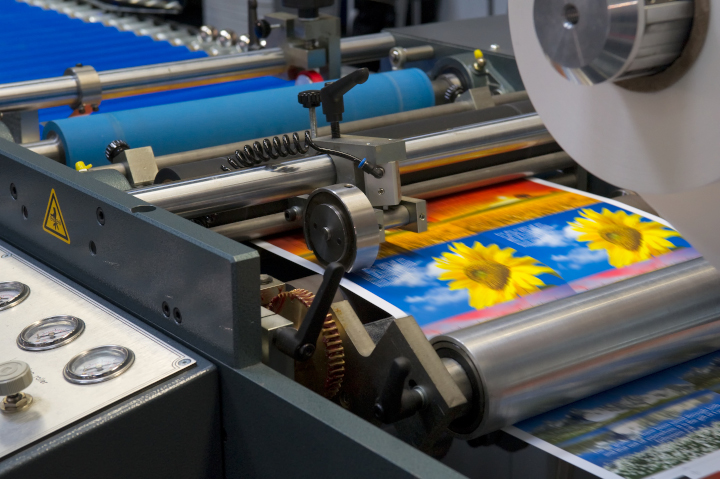In today’s fast-paced business world, offset printing for small businesses has emerged as a reliable and cost-effective solution. Whether you are a startup or an established small enterprise, understanding the benefits of offset printing can significantly enhance your marketing efforts and product presentations. This article delves into the various aspects of offset printing, offering insights into why it remains a preferred choice for many small businesses.

What is Offset Printing?
Offset printing is a widely-used printing technique where the inked image is transferred (or ‘offset’) from a plate to a rubber blanket, and then to the printing surface. This method is known for its high-quality prints and is ideal for producing large volumes at a lower cost per unit.
Why Choose Offset Printing for Small Businesses?
Choosing offset printing offers small businesses a range of advantages. From its versatility in printing various materials to its ability to produce consistent quality in large quantities, offset printing is a robust choice. The initial setup costs might be higher than digital printing, but the cost-effectiveness in large runs makes it a prudent choice for small businesses.
Benefits of Offset Printing
- Cost-Effective for Large Runs: Once the plates are created, the cost per unit decreases with larger quantities, making it economical for bulk printing.
- High-Quality Output: The technique provides superior image quality with sharp details and vibrant colors.
- Wide Range of Printing Surfaces: Offset printing can be used on a variety of surfaces including paper, cardboard, and plastic.
- Customizable Inks: Businesses can use specialty inks such as metallic and Pantone colors to enhance their print materials.
Understanding the Offset Printing Process
The offset printing process involves several steps to ensure high-quality output. This includes preparing the plates, setting up the press, and running the print job. Attention to detail in each step is crucial for maintaining the print quality that offset printing is known for.
Pre-Press Preparation
Before the actual printing begins, the artwork is prepared and the plates are created. This stage is critical as it determines the final output quality. The design is transferred onto aluminum plates, each representing one of the CMYK colors used in printing.
Press Setup
Once the plates are ready, they are mounted onto the press. The press is calibrated to ensure that the colors align perfectly, and the paper is fed through the machine to begin printing.
Offset vs. Digital Printing
While both offset and digital printing have their merits, choosing between them depends on the specific needs of a business. Offset printing is ideal for larger print runs due to its cost-effectiveness, whereas digital printing is suitable for smaller quantities and offers quicker turnaround times. Understanding these differences can help businesses make informed decisions based on their budget and time constraints.
Environmental Considerations
With growing environmental concerns, many businesses are opting for eco-friendly printing solutions. Offset printing is increasingly adopting greener practices by using soy-based inks and recycled paper, making it a sustainable choice for environmentally-conscious businesses.
Applications of Offset Printing in Small Businesses
Small businesses utilize offset printing for a variety of applications, from marketing materials to product packaging. The ability to produce high-quality prints in bulk makes it ideal for brochures, business cards, flyers, and more.
Marketing Materials
For small businesses, creating impactful marketing materials is crucial. Offset printing ensures that brochures, flyers, and posters are produced with vibrant colors and sharp images, capturing the attention of potential customers.
Product Packaging
In retail, the packaging is a direct reflection of the brand. With offset printing, businesses can create custom packaging solutions with high-quality graphics and finishes, enhancing their product’s appeal on the shelves.
Cost Analysis: Is Offset Printing Worth It?
Conducting a cost analysis is essential for small businesses considering offset printing. Although the initial setup costs are higher, the reduced cost per unit in large runs can lead to significant savings. Businesses should evaluate their printing needs and budget to determine if offset printing is the right fit.
Comparing Costs
When comparing costs, it’s important to consider the quantity and frequency of print jobs. For businesses with regular large-volume printing needs, offset printing offers a more economical solution compared to digital printing.
Long-Term Savings
Investing in offset printing can lead to long-term savings as it reduces the per-unit cost for large print runs. This makes it an attractive option for small businesses looking to manage their budgets effectively.
Tips for Optimizing Offset Printing
To get the most out of offset printing, businesses should focus on optimizing their printing processes. This includes choosing the right paper quality, working with experienced printers, and ensuring that designs are print-ready.
Choosing the Right Paper
The choice of paper can significantly impact the final print quality. Businesses should select paper that complements their design and printing needs, balancing cost and quality.
Working with Experienced Printers
Partnering with experienced printers ensures that businesses receive guidance and expertise throughout the printing process, resulting in high-quality outputs that meet their expectations.
Conclusion
In conclusion, offset printing for small businesses offers a range of benefits including cost-effectiveness, high-quality prints, and versatility in printing surfaces. By understanding the process and optimizing their printing strategies, small businesses can leverage offset printing to enhance their marketing materials and product presentations.

FAQs
1. What is the main advantage of offset printing?
The main advantage of offset printing is its ability to produce high-quality prints at a low cost per unit for large-volume jobs.
2. Is offset printing suitable for all types of materials?
Yes, offset printing is versatile and can be used on various materials including paper, cardboard, and plastic.
3. How does offset printing differ from digital printing?
Offset printing is more cost-effective for large runs, while digital printing is better for small quantities and has quicker setup times. For more information, visit Vistaprint.
For further insights on technological advancements in printing, explore AI in Printing and Edge AI in Printing.
This article contains affiliate links. We may earn a commission at no extra cost to you.







